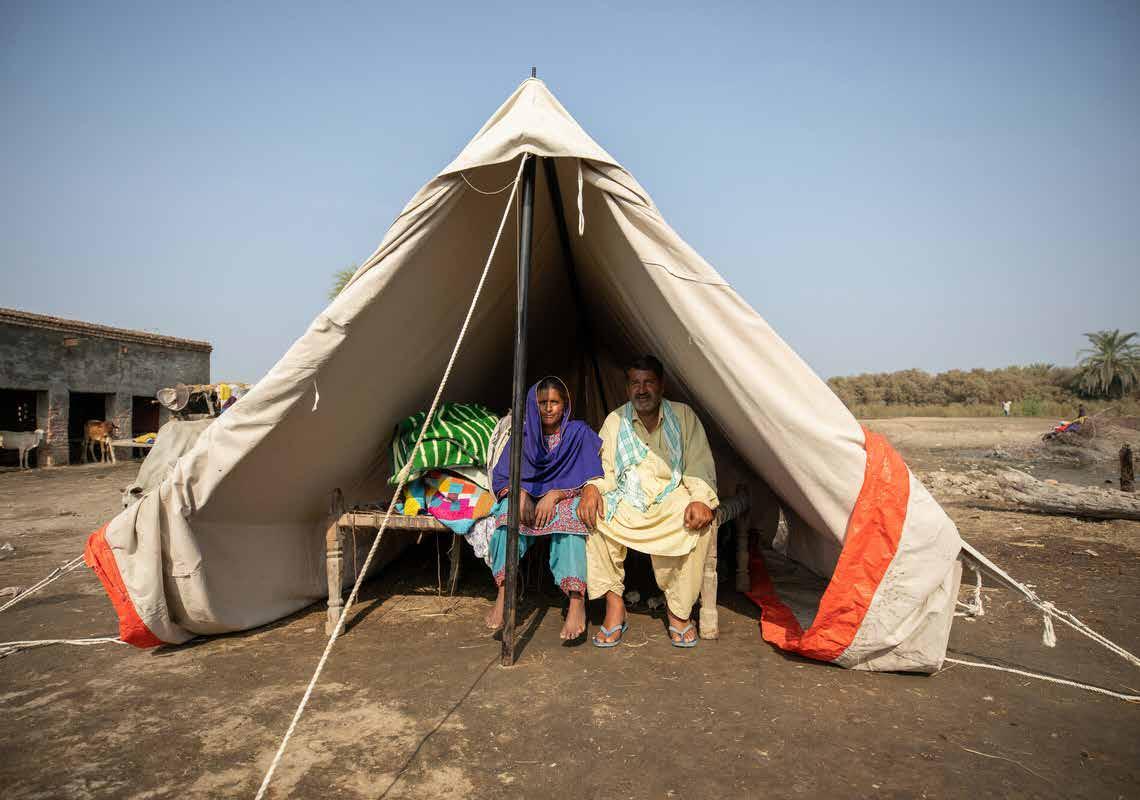
1 minute read
HOW WE HELPED: EMERGENCY SHELTER AND WINTER ASSISTANCE
“There are 300 or 400 houses in this village and almost all of them were damaged in the rains,” said Jeyand in November 2022. “When the roof of our house collapsed, I took my wife and 16-year-old son to the village mosque. It is built at a slight elevation so we gathered there with more than 100 other villagers for shelter. We lived in the mosque for almost a month. The water then continued to rise until it reached as high as our chests. We fled the mosque as we were terrified and we walked to the nearby roads to escape the water. We lived on the road for around a month.”
A DEC member charity provided shelter kits to 61 people in Jeyand’s village, along with food, household items including blankets and cooking utensils, and hygiene kits.
8,900 tents for families
7,800 winter kits containing blankets, bedding and clothes

9,800 household kits including mosquito nets and utensils
Heavy rainfall, floods and landslides led to a huge loss of homes, with two million houses wholly or partially destroyed. Almost eight million people were displaced, many for long periods of time because flood waters took weeks or months to recede in some districts. In freezing winter temperatures, people needed emergency shelters and blankets and items to meet their everyday needs such as cooking equipment.
The rebuilding of homes remains an area that people in need have identified as a major priority. There are very few humanitarian agencies working on rebuilding or building new permanent homes despite the high demand due to the lack of available resources and the high cost, which unfortunately means that there are more people in need than funds available.










